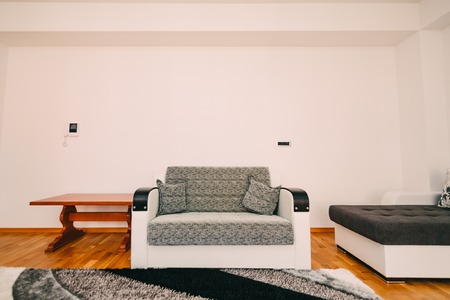1. Choosing the Right Fixture
When selecting a chandelier or pendant light, its important to consider the size, style, and lighting needs of your space. The right fixture can enhance the overall design and functionality of your room.
Size Matters
The size of your chandelier or pendant light should be proportional to the room and the furniture below it. A fixture that is too large can overwhelm the space, while one that is too small may not provide enough visual impact or illumination.
General Sizing Guidelines
| Room Size (Square Feet) | Recommended Fixture Diameter (Inches) |
|---|---|
| Up to 100 sq. ft. | 12″ – 18″ |
| 100 – 200 sq. ft. | 18″ – 24″ |
| 200 – 300 sq. ft. | 24″ – 36″ |
| 300+ sq. ft. | 36″ or more |
Selecting the Right Style
Your light fixture should complement the existing decor of your home. Whether you prefer a modern, traditional, rustic, or industrial look, choosing a chandelier or pendant that matches your aesthetic will create a cohesive design.
Popular Styles
- Modern: Sleek lines, minimalistic design, often with metal or glass finishes.
- Traditional: Ornate details, classic shapes, and luxurious materials like crystal or bronze.
- Rustic: Natural elements like wood and wrought iron with a cozy, warm feel.
- Industrial: Bold metals, exposed bulbs, and a raw, unfinished look.
Lighting Needs
The function of the room plays a key role in determining how much light you need. Consider whether the fixture will be the main source of light or serve as an accent piece.
Brightness Recommendations
| Room Type | Lumens Needed |
|---|---|
| Dining Room | 3,000 – 6,000 lumens |
| Living Room | 1,500 – 3,000 lumens |
| Kitchen Island | 5,000 – 7,500 lumens |
| Bedroom | 2,000 – 4,000 lumens |
Selecting the right chandelier or pendant light requires careful consideration of size, style, and brightness to ensure it enhances both aesthetics and functionality in your space.
2. Determining the Proper Height
Hanging a chandelier or pendant light at the right height is crucial for both functionality and aesthetics. The ideal height depends on your ceiling height, the room’s purpose, and the furniture placement beneath the fixture. Here’s how to determine the best height for your lighting fixture.
General Guidelines Based on Ceiling Height
A good rule of thumb is to hang the bottom of the chandelier or pendant light at an appropriate distance from the floor. Use the table below as a reference:
| Ceiling Height | Recommended Hanging Height (Bottom of Fixture) |
|---|---|
| 8 feet | 30-34 inches above a table / 7 feet above the floor |
| 9 feet | 32-36 inches above a table / 7.5 feet above the floor |
| 10 feet | 34-40 inches above a table / 8 feet above the floor |
| Taller than 10 feet | Add approximately 3 inches for each additional foot of ceiling height |
Over a Dining Table or Kitchen Island
If you’re installing a chandelier or pendant over a dining table or kitchen island, make sure it hangs low enough to provide adequate lighting but high enough to avoid obstructing views across the table. The ideal range is typically 30 to 36 inches above the tabletop. For larger fixtures, you may need to adjust slightly higher.
Sizing Considerations for Proportionate Look
The size of your light fixture also affects how high it should be hung. A large, bulky chandelier may need to be placed slightly higher to maintain balance in the space, while smaller pendants can be positioned lower for more direct illumination.
Larger Open Spaces and Entryways
If you’re hanging a chandelier in an entryway or living space with high ceilings, ensure there’s at least 7 feet of clearance from the floor to the bottom of the fixture. In grand entryways with double-height ceilings, consider suspending it at a height where it remains visually connected to the space rather than floating too high.
Avoiding Common Mistakes
- Too High: Hanging your fixture too high can cause ineffective lighting and make it look disconnected from your décor.
- Too Low: A fixture that hangs too low may obstruct sightlines and feel overwhelming in the space.
- Poor Alignment: Make sure multiple pendant lights are evenly spaced and aligned for a cohesive look.
Taking these factors into account will help you achieve an ideal balance between illumination and design impact.

3. Selecting the Right Location
Positioning your chandelier or pendant light in the correct spot is essential for achieving balance and visual appeal. Whether you are installing it above a dining table, kitchen island, or in an entryway, the right placement ensures both functionality and aesthetics.
Dining Table Placement
When hanging a chandelier or pendant light above a dining table, consider these guidelines to ensure proper positioning:
| Factor | Recommendation |
|---|---|
| Height Above Table | 30-36 inches from the tabletop to the bottom of the fixture. |
| Fixture Width | About half to two-thirds the width of the table for proportional balance. |
| Centering | Align the fixture with the center of the table, not necessarily the room’s ceiling center. |
Kitchen Island Placement
Pendant lights are a popular choice for illuminating kitchen islands. Here’s how to position them correctly:
| Factor | Recommendation |
|---|---|
| Height Above Countertop | 30-36 inches from the countertop to the bottom of the fixture. |
| Spacing Between Lights | If using multiple pendants, space them 24-30 inches apart for even lighting. |
| Sizing and Number | Larger islands may require three smaller pendants, while smaller islands work well with one or two larger fixtures. |
Entryway Placement
A chandelier in an entryway can create a stunning first impression. Follow these placement tips:
Ceiling Height Considerations
- If your ceiling is under 10 feet, hang the fixture so that its bottom is at least 7 feet from the floor.
- For ceilings over 10 feet, consider adding a multi-tiered chandelier for extra impact.
Sizing Guidelines
- The diameter of the fixture should be roughly equal to the sum of your entryway’s length and width in feet (e.g., a 10×12 foot entryway should have a chandelier around 22 inches wide).
- If placing near a staircase, ensure there’s enough clearance to avoid obstruction.
General Tips for Proper Positioning
- Avoid placing fixtures too close to walls or corners where they may look unbalanced.
- Ensure ample clearance for walking underneath in open spaces.
- If unsure about placement, use painter’s tape or temporary hooks to test different positions before installation.
Selecting the right location enhances both functionality and design, making your chandelier or pendant light a focal point in any space.
4. Installing with Safety in Mind
When installing a chandelier or pendant light, safety should always be a top priority. A secure and stable installation ensures that your fixture not only looks great but also functions properly without any hazards. Follow these key steps to ensure a safe installation.
Use Appropriate Mounting Hardware
Choosing the right mounting hardware is crucial for supporting the weight of your chandelier or pendant light. Different ceiling types require different mounting solutions.
| Ceiling Type | Recommended Mounting Hardware |
|---|---|
| Drywall (No Joist) | Heavy-duty anchors or toggle bolts |
| Ceiling Joist | Standard mounting bracket with screws secured into the joist |
| Concrete Ceiling | Masonry anchors with appropriate screws |
| Suspended Ceiling | Specialized brace kits designed for drop ceilings |
Ensure Proper Electrical Connections
Proper wiring is essential for both safety and functionality. Before working on electrical connections, always turn off the power at the breaker box. Use a voltage tester to confirm there is no electricity flowing before proceeding.
Key Wiring Steps:
- Match Wire Colors: Typically, black or red wires are “hot,” white wires are neutral, and green or bare copper wires are ground.
- Secure Wire Connections: Use wire nuts to tightly connect wires and wrap them with electrical tape for extra security.
- Avoid Overcrowding the Junction Box: Ensure all wires fit neatly within the box without excessive bending or force.
- Double-Check All Connections: Loose wires can cause flickering lights or even fire hazards.
Follow Safety Guidelines for a Secure Installation
A few additional precautions will help you complete your installation safely and effectively.
Safety Tips:
- Turn Off Power: Always shut off electricity at the circuit breaker before starting any installation.
- Use a Sturdy Ladder: Ensure you have a stable platform to work from when mounting the fixture.
- Check Weight Capacity: Verify that your electrical box is rated to support the weight of your chandelier or pendant light.
- If Unsure, Hire a Professional: If you’re uncomfortable with wiring or heavy lifting, consult an electrician for assistance.
A properly installed chandelier or pendant light not only enhances the beauty of your space but also provides peace of mind knowing its securely mounted. Taking these safety measures ensures that your lighting fixture remains functional and hazard-free for years to come.
5. Enhancing the Ambiance with Dimming and Bulbs
Choosing the right lighting for your chandelier or pendant light is about more than just style—it also affects the overall ambiance of your space. The type of bulb you use and whether or not you incorporate a dimmer switch can make a significant difference in both functionality and atmosphere.
Choosing the Right Bulb Type
The type of bulb you select impacts the brightness, color temperature, and energy efficiency of your fixture. Here’s a quick comparison to help you decide:
| Bulb Type | Brightness | Color Temperature Options | Energy Efficiency | Lifespan |
|---|---|---|---|---|
| LED | High | Warm to Cool White | Very Efficient | 15,000-50,000 hours |
| Incandescent | Moderate | Warm White | Least Efficient | 750-2,000 hours |
| CFL (Compact Fluorescent) | Moderate to High | Cool to Warm White | More Efficient than Incandescent | 8,000-10,000 hours |
| Halogen | Bright | Warm White | Slightly More Efficient than Incandescent | 1,000-2,500 hours |
If youre looking for longevity and energy savings, LED bulbs are an excellent choice. They come in various color temperatures to suit different moods and settings.
The Benefits of Adding a Dimmer Switch
A dimmer switch allows you to adjust the brightness of your chandelier or pendant light according to different needs and occasions. Here’s why you should consider installing one:
- Customizable Ambiance: Set the perfect mood for dining, entertaining, or relaxing.
- Energy Savings: Lowering brightness reduces electricity consumption.
- Extended Bulb Life: Reducing brightness can help bulbs last longer.
- Versatility: Easily transition from bright task lighting to soft ambient lighting.
Selecting a Compatible Dimmer Switch
If youre using LED bulbs, make sure they are dimmable and pair them with a compatible dimmer switch. Not all LED bulbs work with standard dimmers, so check manufacturer recommendations before purchasing.
Final Tip: Layer Your Lighting for Maximum Impact
A chandelier or pendant light works best when combined with other sources of lighting such as recessed lights or wall sconces. Using multiple layers of lighting helps create depth and enhances the overall feel of your space.
By choosing the right bulbs and incorporating a dimmer switch, you can ensure that your chandelier or pendant light not only looks great but also provides the perfect illumination for any occasion.

